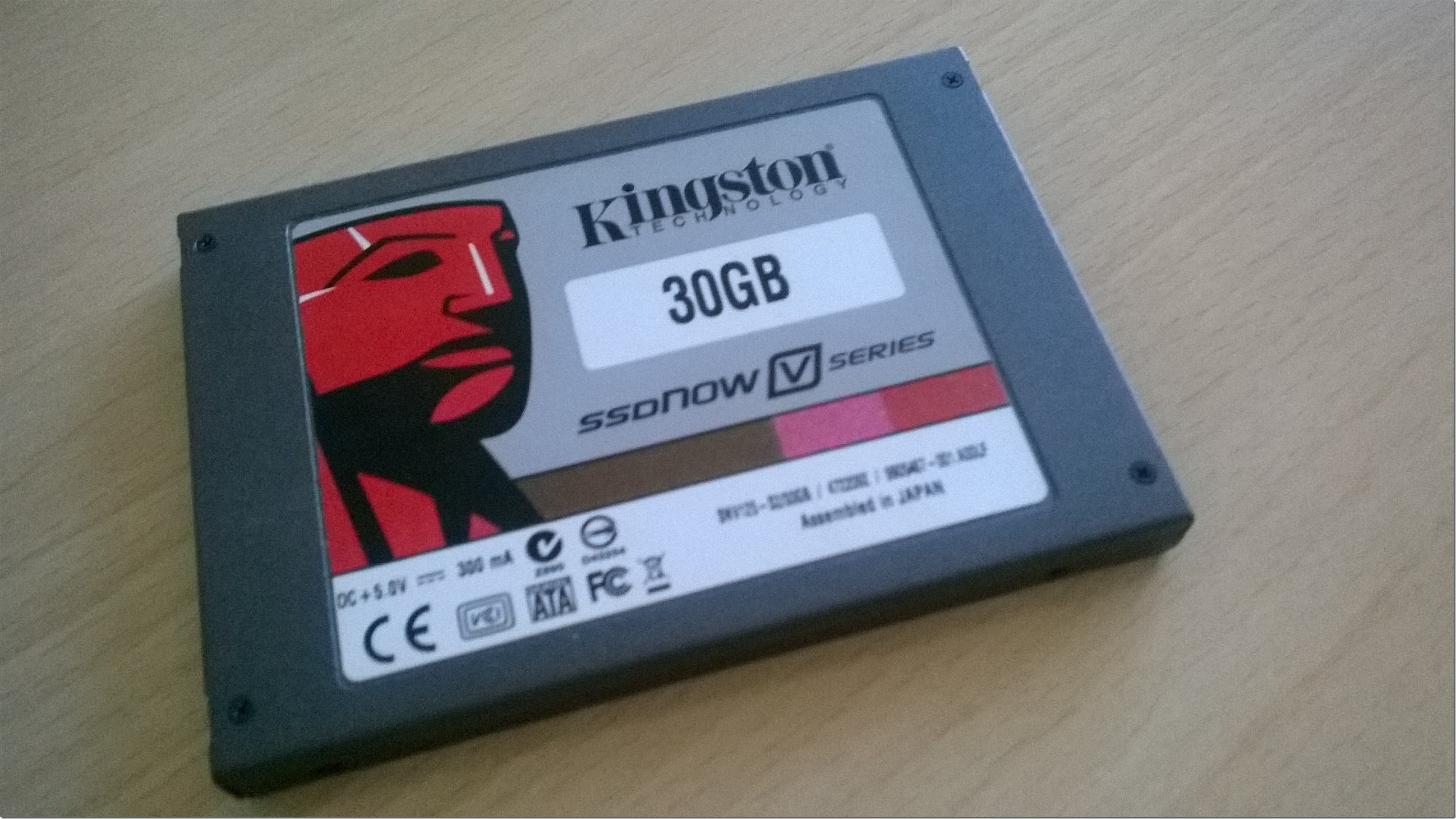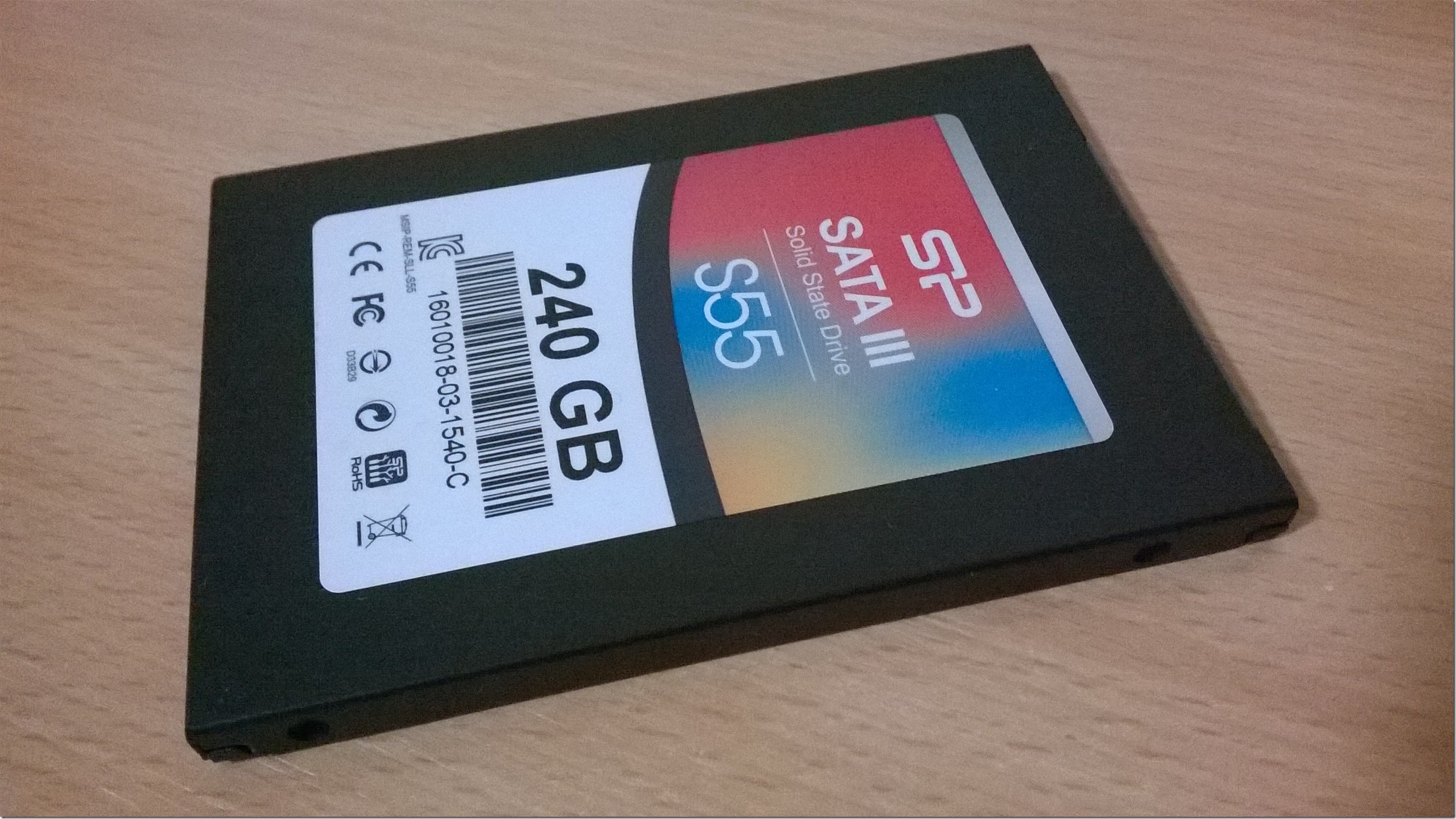The inspiration for today’s article I got after talking with a few buddies on the subject of SSD drives. As I repeated the same story with each of them, I eventually found and today’s topic and got the finished story. Now I want to share it with you.
Some 15 years ago, when I was a contributing author with one local IT weekly, I wrote a whole series of articles on the subject of the computer optimization and speed up. One of the topics was the disk partitioning scheme and how it can affect the computer performance.
And then came new technology based on the memory chips – the Solid State Drives. Many of that old advice is now useless. With this new technology we can improve the computer performance significantly.
The SSD drive will not make your whole computer work faster. It will make it to work smoother. And you will see that.
My first SSD
My first contact with the SSD technology was back in 2010. I obtained the new SSD disk for my netbook. That was Kingston SSDNow V series drive. If you looking at its performances, you can see that this drive can read data with speed of 180 MB per second and to write data with 50 MB per second. This is still better than many traditional hard disks you can find in many laptops or even desktops.
I replaced the built-in 160GB SATA 2 hard disk with the 30GB SATA 2 SSD drive. I saw several gains. My netbook became lighter, quieter and faster, with a battery life extended for about hour. Not bad at all.
As this ASUS eeePC notebook had the older Atom CPU, the SSD drive gained me additional boost on the whole system to use it for software based virtualization. This platform can’t be used for some large scale virtualization tasks. However, the SSD drive boosts IO operations on the disk level and remove bottleneck in that part.
And the rest is a history
I upgraded that drive eventually last year on the bigger 128GB SSD drive. Moreover, my office laptop now has an SSD drive. Over time I purchased newer SSD drives for same nominal cost and with more capacity and the disk speed.
Recently I found Silicon Power SSD drive of 240GB in size. This SATA 3 drive has a very high speed of 550 MB/s in reading and 500 MB/s in writing data. I replaced smaller SSD drive in my home lab laptop.
I expected fast operations with SSD. However, this was very fast that I can see difference against the old SSD disk. I was amazed. One of my virtual machines, that I use when I need to work from home, now started without slowdowns and hiccups.
What I learned so far
As I already mentioned, your computer will have improved speed of the CPU and memory. Also, of the video card. You can’t improve this part without replacing them. For most people only one improvement here will be to add as much memory as their computer can use. With low cost of the memory (RAM) this is a good trade off.
With more memory you can run more programs or load more data in it. Even with old hard disks this will be of benefit to you. However, if you have older laptop (or the desktop that you still can use), you can be limited on maximal amount of RAM that you can install.
The gains of the SSD drive
Replacing traditional hard disk with the SSD will bring few gains to you. I felt them all during past few years. You can see all those improvements immediately. Your computer will be:
- Lighter in weight
- Quieter
- With longer lasting battery
- Resistant to shaking and movements during the work time
- Faster disk operations
The SSD drives are memory based devices. As they don’t have mechanical parts (a motor, the heads, the plates), they are lighter by about 100 grams. Not too much difference with the standard laptops weighing around 2,5 kilograms. However, on netbooks and lighter notebooks under 1,5 kilograms this can be a significant difference.
When you don’t need to power the motor, then whole computer will be quieter and power consumption will be lower. Therefore, your laptop battery, even if it is just 3- or 4-cell version, will last longer maybe by an additional hour. I saw the dead batteries, that can’t power on a laptop with the hard disk inside, can give 10 minutes of work time for laptop with SSD.
Traditional hard disks have mechanics. If you shake them during the work or drop them, there is a good chance that you destroyed it. The head can fall on the plate and damage is often irreparable. Contrary to them, the SSD drives are pure memory boards. You can shake them during the work or even drop them and they will survive that. Moreover, you can take laptop with you when it’s in the middle of processing.
The software operations
Different disk technology will bring you few changes in the everyday work. This new habits are conditioned with physical characteristics of this device. Memory block should be written equally or some of them can lose capability to remember written data.
The memory controller inside the SSD will handle this for you. However, you should change few manners with the SSD drives to make them last longer. Bear this in mind.
With the SSD drives you don’t need to put computer in hibernation. As I mention, that will increase writing data to some cells. Moreover, you really don’t need hibernation. Reason is simple. Your computer will boot in 15-20 seconds. This is often faster that restoring memory state even from SSD drive.
The sleep function is not same as the hibernation. Don’t confuse them. Sleep means that you just want to turn off the disk, the monitor and other peripherals and just keep the processor and the memory holding the data with minimal required power.
Second change will be the virtual memory on your computer. You should avoid using any part of the SSD drive as extension to the RAM. That will increase number of the writing operations and shorten life time of the disk.
Moreover, you don’t need virtual memory. Just close unnecessary application and open it again. It will load from the SSD drive in a couple of seconds. Often faster than your computer can replace memory content with that on the disk.
No more defragmentation. You don’t need to worry whether all data written in front section of the disk or not, as with the traditional hard disks. Wherever the data is, your computer can access them in same time.
Faster access time is great benefit also for virtualization. Your virtual machines can run faster as there is no waiting time to load their virtual hard disks that can spread over your physical drive. That means that we need the virtual drive optimization just to preserve valuable disk space on smaller SSD drive.
And few bad sides
Although SSD drives are really great improvement for any computer, they also have few bad sides. That‘s same with any technology. Things to bear in mind:
The SSD drives are limited in size. The larger capacity drives are significantly expensive than traditional hard disks, when you compare price per gigabyte.
The SSD drives can be written limited number of times before they lose capability to store new data. The magnetic hard disks doesn’t have such limit. That’s why we can have a virtual memory of the hibernation file on them.
Additional RAM and SSD are best way to speed up your old computer
If you’re enjoying multimedia contents, playing video games, working in the CAD application or have high demands for the virtualization and other data processing, this technology will bring you benefit.
In past few years we have seen this technology more and more even in the enterprise storage systems. The SSD drives can improve database operations and other requests for the manipulation and the flow of the large amount of the data.
As you can see, memory technology is more expensive than traditional magnetic technology. At the same time, this technology is significantly faster and offering powerful boost to the performance.
Many computers purchased in last few year are on the end of their life. However, if we have quality motherboard and good CPU, we can add some RAM and SSD to it and give it a new life for few years more.


[…] it instead of the hard disk for your old PC. Of course, any USB stick is faster than any mechanical hard disk but still slower than SSD. In addition, it’s not recommended to perform the heavy writing […]
LikeLike
[…] started with only 4GB RAM and the mechanical hard disk. The first major upgrade was the replacement of that mechanical hard disk with the 240GB SSD drive. The second upgrade was additional 4GB RAM. […]
LikeLike
[…] a while, depending on the size of your vDisk file or speed of your computer. In my case, I use the SSD drive and this process was […]
LikeLike
[…] 5.2.x or later) can expose any virtual disk as SSD. Hereinafter, the operating system could prevent defragmentation on the virtual […]
LikeLike
[…] a hard disk, we could also use the dedicated swap partition. This is not recommended when we use SSD or any other memory based storage medium, as we don’t want to shorten its […]
LikeLike
[…] last step, I restarted Windows. My VM rebooted quickly as it’s optimized and the laptop has an SSD […]
LikeLike
[…] and relax or grab a coffee. This process will take a while, depending on the size, condition and technology of your […]
LikeLike
[…] waited for the desktop to appear. How fast this will happen depends on the computer speed and the disk type. You may also want to check this post about the VM […]
LikeLike
[…] Moreover, they are not equally efficient and some choices are better then others. We already discussed in details the benefits of the SSD drives over magnetic hard […]
LikeLike
[…] We will start the update process and wait for it to finish. That will take some time, depending on location of the updates (local or on the Internet) and the speed of the computer. That is related to the CPU parameters or the HDD type (the SDD drives are much faster). […]
LikeLike